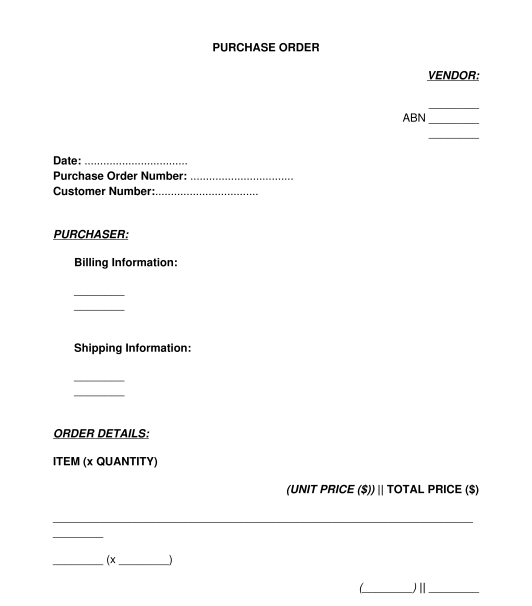 11/01/2025
11/01/2025

Answer a few questions and your document is created automatically.

Your document is ready! You will receive it in Word and PDF formats. You will be able to modify it.

A Purchase Order is a document sent from a buyer to a seller, so that the buyer is able to purchase some products or services from the seller.
Normally, a Purchase Order will be used when there is already an existing relationship between the buyer and the seller. For example, the buyer might have been ordering products from the seller for some time already, and might just be submitting a new order for the same kinds of products.
The Purchase Order can indicate the types, quantities, and agreed prices for products or services. In many cases, the Purchase Order is subject to the seller's standard terms and conditions (such as a Contract for Sale of Goods, a set of Terms and Conditions for Sale of Goods Online or a Service Agreement). This means that the terms and conditions set out the general rules regarding the transaction (such as delivery times, payment methods, how to deal with lost or damaged items etc), while the Purchase Order sets out the specific details of the current order.
Unlike a Tax Invoice, which is sent by the seller to request payment, a Purchase Order originates from the buyer and is the first official step in a purchase transaction. It ensures clear communication by detailing the specific items, their quantities, and the agreed prices. Upon fulfilling the order, the seller issues a Tax Invoice, usually referencing the Purchase Order number, facilitating a smooth and accurate billing process.
Having a Purchase Order not only clarifies and confirms the buyer's intentions but also aids in maintaining financial records and managing expenses, providing a layer of protection for both buyer and seller.
If the seller has a standard set of terms and conditions then review these to understand the purchase process and any specific rules about order products or services from the seller.
Enter the relevant details in the Purchase Order such as the price per unit, total quantity, descriptions of the goods, applicable taxes, shipping charges, and relevant contact information for all parties involved.
After the Purchase Order is created, it should be provided to the seller. At that time, the seller will decide whether they are able to fulfill the order at the price requested. The buyer should be sure to keep a copy of the Purchase Order for their own records.
In Australia, Purchase Orders and their enforcement or often subject to the Australian Consumer Law and relevant state and territory legislation, which oversee matters related to contractual agreements, sales of goods, and business transactions. Tax laws may also be relevant.
General principles of contract law, as set out in the common law, also apply.
You fill out a form. The document is created before your eyes as you respond to the questions.
At the end, you receive it in Word and PDF formats. You can modify it and reuse it.
Purchase Order - sample template online - Word and PDF
Country: Australia